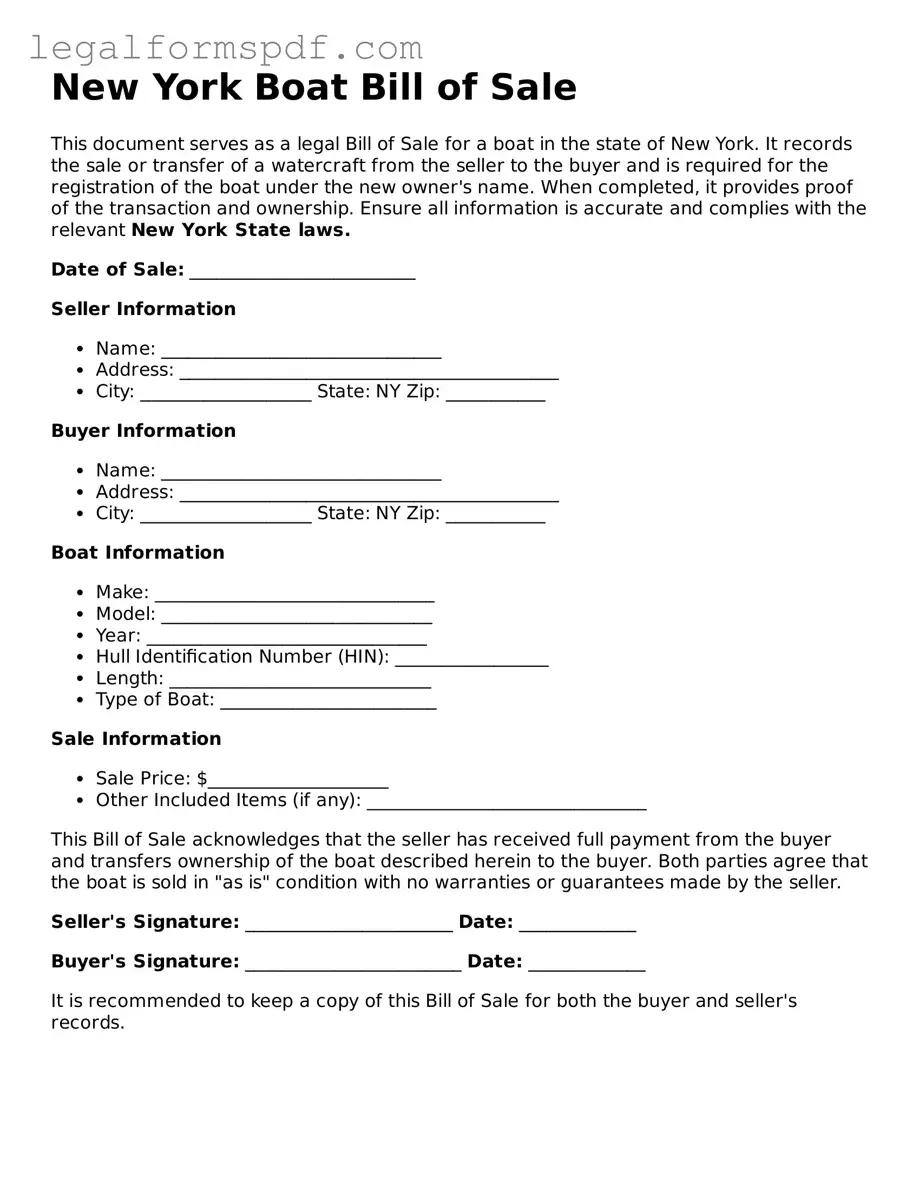When completing the New York Boat Bill of Sale form, a common mistake is omitting essential information. It's crucial to provide complete details, including the make, model, and year of the boat, as well as the hull identification number (HIN). These specifics ensure the vessel is uniquely identified and prevent potential legal issues. Additionally, including the sale date and price validates the transaction and sets its legality in stone. Without these critical pieces of information, the form may be considered invalid, leading to complications in the ownership transfer process.
Another frequent error is failing to clearly outline payment terms. For some, the assumption might be that the sale's financial aspects are straightforward, perhaps a one-time transaction. However, detailing whether the payment is a lump sum or installments, including any deposit required, interest rates, and the due dates for payments, can prevent misunderstandings between the buyer and seller. This clarity not only fosters trust but also ensures both parties are legally protected throughout the transaction.
Not having the form notarized is often overlooked. In New York, not all boat bill of sale forms require notarization, but it's a step that greatly enhances the document's legality. When a notary public witnesses the signing, it provides an official verification that the parties involved in the transaction are indeed who they claim to be. This additional layer of authenticity can be invaluable, especially in disputes concerning ownership or the validity of signatures.
Lack of signatures is a surprisingly common oversight. Both the buyer and the seller must sign the boat bill of sale to confirm their agreement to the terms and conditions outlined in the document. Missing signatures can lead to questions regarding the sale's legitimacy and might necessitate redoing the process to ensure enforceability. It's a simple yet pivotal final step in validating the transaction.
Ignoring the need to provide a detailed description of the boat's condition is a mistake that can lead to future conflict. Being transparent about any flaws, damages, or unique features of the boat can prevent disputes after the sale has been completed. This honesty not only builds trust between the buyer and seller but also safeguards the seller from potential legal claims regarding the vessel's condition post-sale.
A final common error is neglecting to include a clause about the boat being sold "as is" if that is the intention. This term indicates that the buyer accepts the boat in its current state, including all faults, and relinquishes their right to make claims against the seller for any issues discovered after the sale. Omitting this clause could leave the seller vulnerable to future claims by the buyer. An "as is" sale should be clearly stated in the document to protect the interests of both parties effectively.
